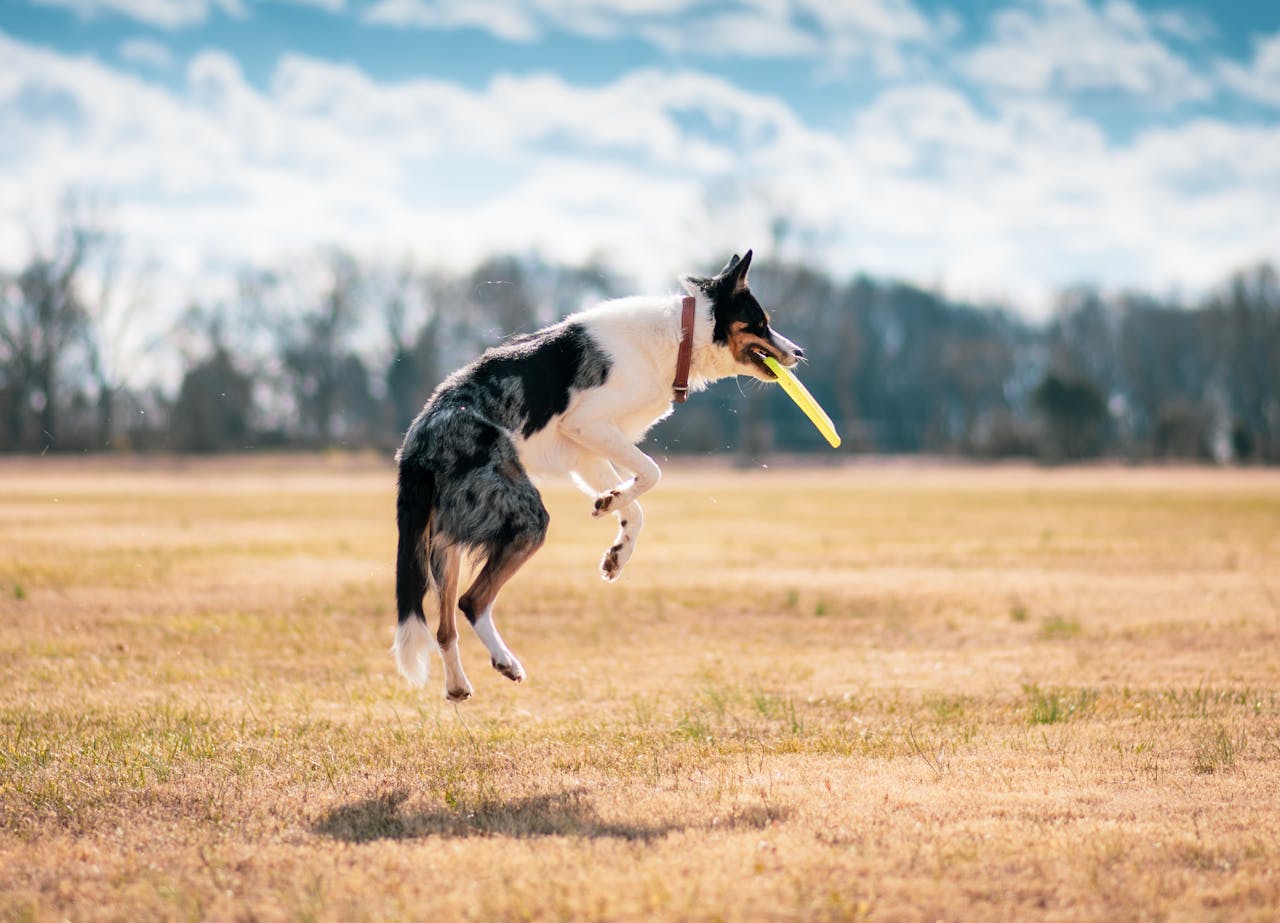
Joint stiffness affects countless dogs as they age, turning simple movements into uncomfortable challenges. This is where glucosamine enters the picture as a potential game-changer for canine mobility.
Glucosamine is a naturally occurring compound made of glucose and glutamine that’s essential for maintaining healthy cartilage and joint function in dogs. It serves as the building block that keeps your dog’s joints working smoothly. The substance plays a critical role in cartilage health by stimulating the production of glycosaminoglycans—essential molecules that give cartilage its shock-absorbing properties.
As dogs age, their bodies produce less of this vital amino sugar, leading to joint pain, stiffness, and reduced mobility. Studies suggest that about 20% of dogs over one year old and 80% of dogs over seven years old experience some form of joint discomfort—many without showing obvious symptoms until the condition advances.
How Does Glucosamine Work for Dogs’ Joints?

When your dog runs, jumps, and plays, their joints absorb tremendous force with each movement. In healthy dogs, two key components make this possible without pain: cartilage and synovial fluid. Over time, this system can break down, leading to discomfort and reduced mobility. This is where glucosamine comes into play.
The Joint System: Nature’s Shock Absorber
Dog joints function like a car’s suspension system. The ends of bones are covered with a spongy layer of cartilage that absorbs impact. Without this cushion, bones would grind directly against each other. Surrounding this structure is synovial fluid – a slippery substance that lubricates the joint and allows smooth movement.
When arthritis develops, this balanced system deteriorates. The cartilage thins and roughens, and the quality of synovial fluid diminishes. The result is painful bone-on-bone contact that makes every step uncomfortable for your dog.
Glucosamine’s Dual Action Approach
Glucosamine works through two primary mechanisms to support joint health. First, it serves as a building block for cartilage repair. The compound stimulates the production of proteoglycans and glycosaminoglycans – essential components of the cartilage matrix that give it strength and elasticity.
Second, glucosamine helps improve synovial fluid quality. Better joint lubrication reduces friction between the moving parts, which decreases pain and inflammation. This dual action creates a more hospitable environment for natural healing processes.
Slowing the Degenerative Cycle
Joint problems create a vicious cycle. Pain leads to reduced movement, which weakens supporting muscles and puts more stress on the joints, causing further deterioration. Glucosamine helps interrupt this cycle by addressing the root causes of joint discomfort.
Research suggests that glucosamine is most effective when combined with chondroitin, another natural compound that helps prevent cartilage breakdown. Together, they work to maintain joint structural integrity while supporting damaged tissue repair.
The effectiveness varies between individual dogs. Some owners notice improvements within weeks, while others might need to wait longer. Consistency is key – glucosamine needs regular administration over time to maintain its joint-supporting benefits.
Beyond Simple Symptom Relief
Unlike pain medications that mask discomfort, glucosamine addresses underlying structural issues. While pain relievers have their place in managing severe arthritis, glucosamine offers a more comprehensive approach by supporting repair mechanisms within the joint.
This makes glucosamine particularly valuable as a preventative measure for dogs at high risk of developing joint problems, such as large breeds or active working dogs. Starting supplementation before severe degeneration occurs can help maintain joint health longer.
Does Your Dog Need Glucosamine Supplements?
Joint issues affect countless dogs, with nearly 20% of dogs over age seven showing clinical signs of arthritis. Many cases remain undiagnosed until mobility becomes significantly compromised.
Recognizing the Signs
While dogs cannot verbally communicate joint pain, their behavior provides clear indicators. Watch for these warning signs that may indicate your dog needs joint support:
- Morning stiffness that improves with movement
- Limping that worsens in cold or damp weather
- Reluctance to climb stairs they once bounded up
- Hesitation before jumping into the car or onto furniture
- Decreased interest in walks or playtime
- Irritability when certain areas are touched
These changes typically develop gradually, and owners often mistake them for normal aging rather than treatable joint conditions. Early identification allows for prompt intervention with supportive care.
High-Risk Dogs
Certain dogs have a higher likelihood of developing joint problems that might benefit from glucosamine supplementation:
Large and giant breeds carry more body weight on their joints. Breeds like German Shepherds, Labrador Retrievers, and Great Danes frequently develop hip or elbow dysplasia that can progress to arthritis. A 2007 study found that glucosamine supplements were comparable to several prescription medications in providing comfort for these dogs.
Senior dogs naturally produce less glucosamine as they age, leading to thinner joint fluid and deteriorating cartilage. Dogs over seven years old often show early signs of joint discomfort.
Overweight dogs place excess stress on their joints. The additional pounds accelerate cartilage wear and can turn minor joint issues into painful conditions. Combining weight management with joint supplements often delivers the best results.
Preventative Approach
Consider glucosamine before joint problems emerge, especially for:
Dogs with previous injuries or surgeries involving joints. The trauma from an ACL tear or fracture can accelerate cartilage deterioration even after healing.
Working and athletic dogs engaging in high-impact activities. Agility competitors, hunting dogs, and service animals often benefit from joint support throughout their careers.
Breeds predisposed to joint issues. If your dog’s bloodline has a history of hip dysplasia or other joint conditions, early supplementation could help maintain cartilage integrity longer.
Note that glucosamine requires 4-6 weeks of consistent supplementation before showing noticeable improvements. The supplement works by gradually improving joint lubrication and supporting cartilage repair, rather than masking pain like medications.
| Sign | Description |
|---|---|
| Morning Stiffness | Improves with movement |
| Limping | Worsens in cold or damp weather |
| Reluctance to Climb Stairs | Once bounded up stairs, now hesitant |
| Hesitation to Jump | Before jumping into the car or onto furniture |
| Decreased Interest | In walks or playtime |
| Irritability | When certain areas are touched |
How to Choose the Best Glucosamine Supplement for Your Dog
When your dog shows signs of joint problems, like hesitating before stairs or changing their gait, the right glucosamine supplement can significantly improve their mobility and comfort. Understanding what makes an effective joint supplement helps you navigate the many options available.
Key Ingredients to Look For
The most effective joint supplements combine multiple ingredients for comprehensive support:
Glucosamine HCl vs. Glucosamine Sulfate: Both support joint health, but glucosamine hydrochloride (HCl) offers higher concentration and better targets joint tissues.
Chondroitin Sulfate: Works with glucosamine to maintain cartilage structure, improves joint cushioning, and prevents cartilage breakdown.
MSM (Methylsulfonylmethane): Reduces joint pain and inflammation while supporting tissue repair, providing immediate relief as glucosamine works on long-term support.
Additional beneficial ingredients: Premium supplements may include hyaluronic acid for joint fluid, omega-3 fatty acids for inflammation control, vitamin C for collagen production, or botanicals like turmeric and Boswellia for natural pain relief.
Finding the Right Formulation for Your Dog
Joint supplements come in several forms:
Chewable tablets: Offer precise dosing but may not appeal to picky eaters.
Soft chews: Treat-like supplements that most dogs readily accept.
Powders: Easy to mix with food and well-absorbed.
Liquids: Provide quick absorption and flexible dosing, ideal for small breeds.
For resistant dogs, try hiding chews in peanut butter, mixing powder with wet food, or selecting supplements with appealing flavors like chicken liver.
Proper Dosage Considerations
Correct dosing ensures supplement effectiveness. The standard recommendation is 500 mg of glucosamine per 25 pounds of body weight daily, though individual needs vary.
Most supplements require an initial 4-6 week loading phase with higher doses before reducing to maintenance levels. Consult your veterinarian for proper dosing based on your dog’s weight, condition severity, and health status.
Quality Considerations
Not all supplements are created equal. When selecting a glucosamine supplement:
Choose products with third-party testing or the National Animal Supplement Council (NASC) quality seal. Select supplements from GMP-certified facilities, preferably using human-grade ingredients.
Consider cost per effective dose rather than initial price. Higher-quality supplements often contain more concentrated active ingredients, requiring smaller doses for the same benefit.
Allow 4-6 weeks for noticeable improvement. Consistent use of the right supplement can significantly enhance your dog’s comfort and mobility, leading to a more active lifestyle.
Supporting Your Dog’s Joint Health Beyond Supplements

Joint supplements can improve your dog’s mobility, but they’re just one component of comprehensive joint care. The most effective approaches combine multiple strategies to support comfort and movement from every angle.
Weight management is crucial for joint health. Each extra pound creates additional stress on vulnerable joints. Studies show that a 6-8% weight reduction can significantly improve mobility and reduce pain in dogs with arthritis. Controlled portions and nutrient-dense foods help maintain healthy body condition while supporting joint-stabilizing muscle mass.
Movement is essential, but type matters. Swimming offers low-impact strength building, while short walks on grass rather than concrete maintain mobility without triggering inflammation. For senior dogs or those recovering from injuries, controlled 15-20 minute leash walks often prove more beneficial than longer, strenuous sessions.
A joint-friendly home environment enhances daily comfort. Carpet runners on slippery floors, ramps to avoid jumping, and elevated food and water bowls reduce joint strain. A supportive orthopedic bed helps distribute weight evenly during essential rest periods.
Professional physical rehabilitation provides targeted support for significant mobility challenges. Underwater treadmill therapy, therapeutic ultrasound, and structured exercise programs strengthen muscles around compromised joints while minimizing pain. Many veterinary practices offer rehabilitation specialists who develop customized programs.
Regular veterinary assessment helps identify early joint issues and adjust care plans accordingly. Your vet can create a comprehensive approach incorporating appropriate medications, supplements, weight management, and exercise modifications—tailored to your dog’s age, breed, and condition.
With attention to these areas, dogs with joint challenges can maintain comfort and activity throughout their lives. Consult your veterinarian to develop a customized joint care plan that addresses all aspects of your dog’s well-being.
Giving Your Dog the Best Chance at Lifelong Mobility

Supporting your dog’s joint health requires a comprehensive, proactive care routine. Weight management, appropriate exercise, and a joint-friendly home environment all work together to ease discomfort and preserve mobility. While glucosamine and joint supplements are beneficial, optimal results come from combining attentive home care, regular veterinary guidance, and targeted lifestyle adjustments to keep dogs active and engaged with their families.
Technology now offers additional support through solutions like the Halo Collar, which combines smart boundary features with activity tracking. This allows you to monitor your dog’s mobility patterns, guide safe outdoor activities, and avoid environments that could strain their joints. These tools, integrated with consistent care practices, help maintain healthy joint function for years to come.
For more tips and expert advice on optimizing your dog’s health and happiness, visit our Dog Health page.





